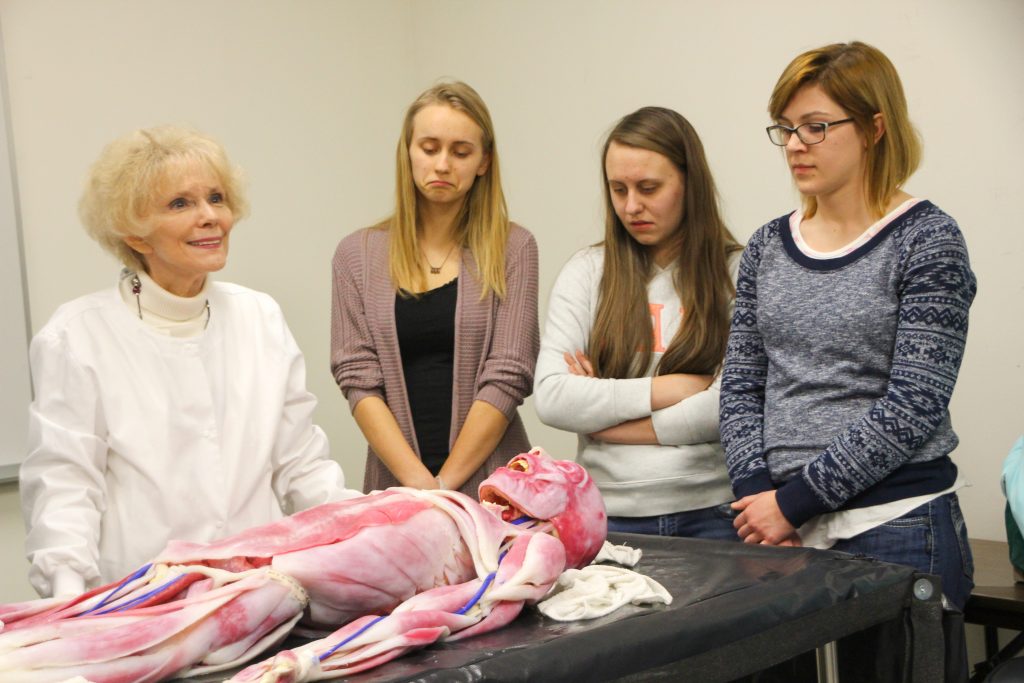Synthetic cadaver is new teaching tool at BBCC
An artificial cadaver that features synthetic human tissues and body parts is a new teaching tool for anatomy and physiology classes at Big Bend Community College.

SynDaver employs hundreds of replaceable muscles, bones, organs, veins and arteries – all made from materials that mimic the mechanical, thermal, and physicochemical properties of live tissue.
BBCC anatomy and physiology instructor Barbara Jacobs has always wanted a human cadaver for the class, but she thinks SynDaver is more realistic and a better teaching tool than the real thing.
“The tissue in a human cadaver turns grey and the veins and arteries are flat,” Jacobs said. “The color and texture of the muscles, veins, and arteries of a SynDaver are correct, and the veins and arteries are full. You can pull a tendon, and a finger will move.”
“It is the perfect learning alternative to dissecting real animals. It is more accurate and a wonderful tool for our anatomy students,” Jacobs said.
BBCC’s pre-nursing students will get to know SynDaver because they must pass Jacobs’ anatomy and physiology class for entry to the nursing program.
Various models are used to replace animals, cadavers, human patients in medical device studies, clinical training, and surgical simulation.
The tissues and body parts are manufactured from water, fibers, and salts, SynDaver is stored submerged in a tank with 70 gallons of water. If cared for properly, it should last for many years. (Human cadavers are replaced every two years and there are many rules and expenses associated with them.)
One issue yet to be resolved is development of a device that will lift SynDaver out of the water tank and place it on a table. The device isn’t available yet, so two people must lift it out of the water and place it on the table.
Students wear gloves while working with SynDaver “not to protect us from SynDaver, but to protect SynDaver from human contamination,” Jacobs said.
Steve Ausere, owner of Basin Family Chiropractic, did the research and wrote the proposal to acquire SynDaver for BBCC. He serves on the advisory committee of BBCC’s new Medical Simulation Technician Program, but saw the benefits of SynDaver for anatomy and physiology students. The synthetic cadaver was purchased with funds from a federal Title V federal grant.

